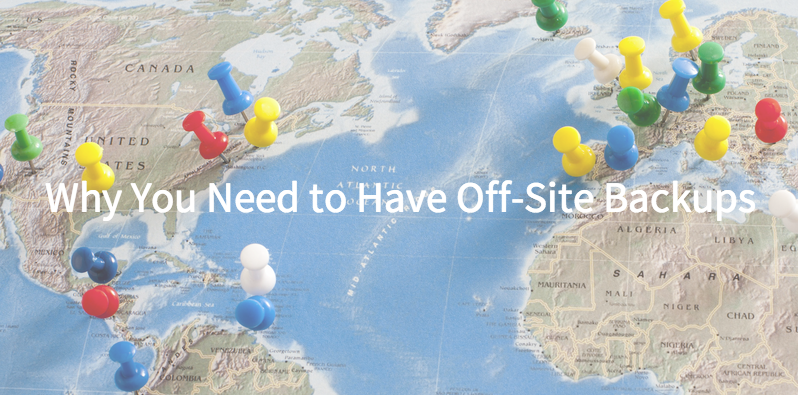
We all understand the role servers play in protecting data. Equally important to this, though, is the need for servers to make that data easily accessible. One of the most important facets of doing this properly is creating off-site backups.
Off-site backups are a critical part of ensuring that data will be available when it’s needed because there are many scenarios in which on-site is compromised or even destroyed. Natural disasters, sudden power failures, cyber intrusion and even human error – there are countless situations that can cause a failure in one’s ability to retrieve data on-site. Maintaining off-site backups is the only way to ensure that your files are protected from each of these.
When to Backup Your Data
The key to maintaining off-site data backups that will truly serve their purpose when called up is to be sure that your business is backing up its data regularly and consistently. Data should be backed up at least once per week, and it helps if this is done at the same time each week. Obviously, the more frequent the better because in the event of an emergency, the most effective data you’re able to retrieve will be that which was most recently backed up. Waiting too long between backups puts you at a more significant risk of losing recent work or files, as nothing between your most recent backup and your latest recovery effort will be available to be retrieved.
Using Both On-Site and Off-Site Data Storage
While keeping your data is safe off-site is important, what happens on-site still matters very much. Many companies utilize a hybrid backup model, which consists of not only the original primary data source, but also on-site backup as well as the off-site backup. When data needs to be retrieved quickly, pulling from a local source can be much quicker than restoring from an off-site location. Of course, the off-site backup is still necessary to mitigate the risk of losing data due to an unforeseen circumstance.
Data Storage Legislation
Where data is concerned, it is always important to thoroughly research and fully understand the local legislation in a particular area. When looking to establish off-site data backups, one must be diligent about making sure to follow all applicable statutes in that separate location, as they may be different from those in the user’s primary area.
Bonus: How to Create Off-Site Backups Using VPS
The first step to creating any off-site backup is to take a thorough inventory of your data. Understand how much data you actually have and begin segmenting that data into files that you absolutely cannot lose, files that you’d like to keep and files that are no longer relevant.
The next step is to determine how much data this actually is. Depending on the quantity of data you’re actually looking to store, you may need multiple servers. One of the most common methods for dividing these servers is by creating a single VPS container that is dedicated to those files which you have determined cannot be lost and a separate one for files that are simply convenient to have on hand. Depending on how you broke out the levels of importance of your data, you may find that additional servers are necessary.
Once you have determined how many servers you actually need, the next step is to find servers that offer the capacity to meet your needs. Once you’ve chosen your servers, all that’s left is to conduct regular backups of your data to the appropriate location*s). At SemoWeb, we offer servers all across the United States and are looking to expand by the end of this year. If you’re looking for the perfect place to set up off-site backups with reliable, easy-to-manage VPS, look no further than SemoWeb!

